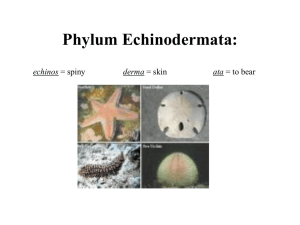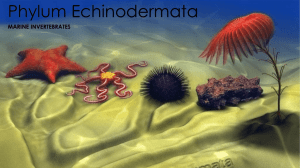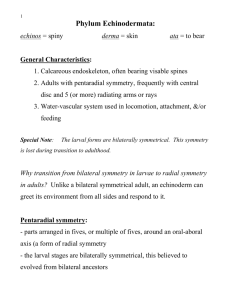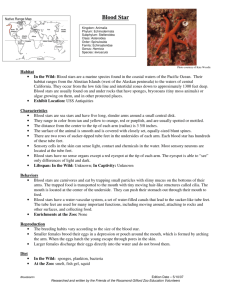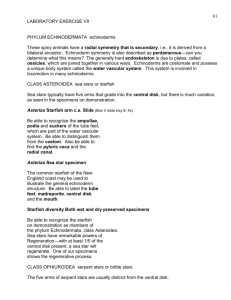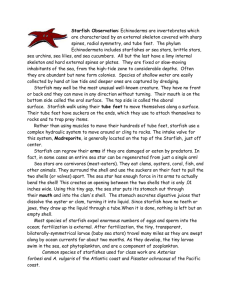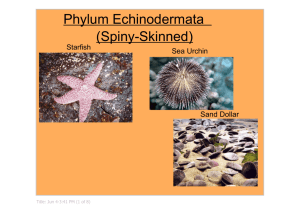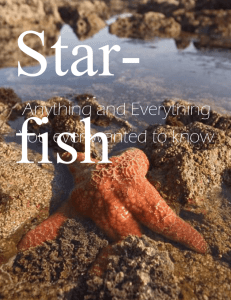View More
advertisement
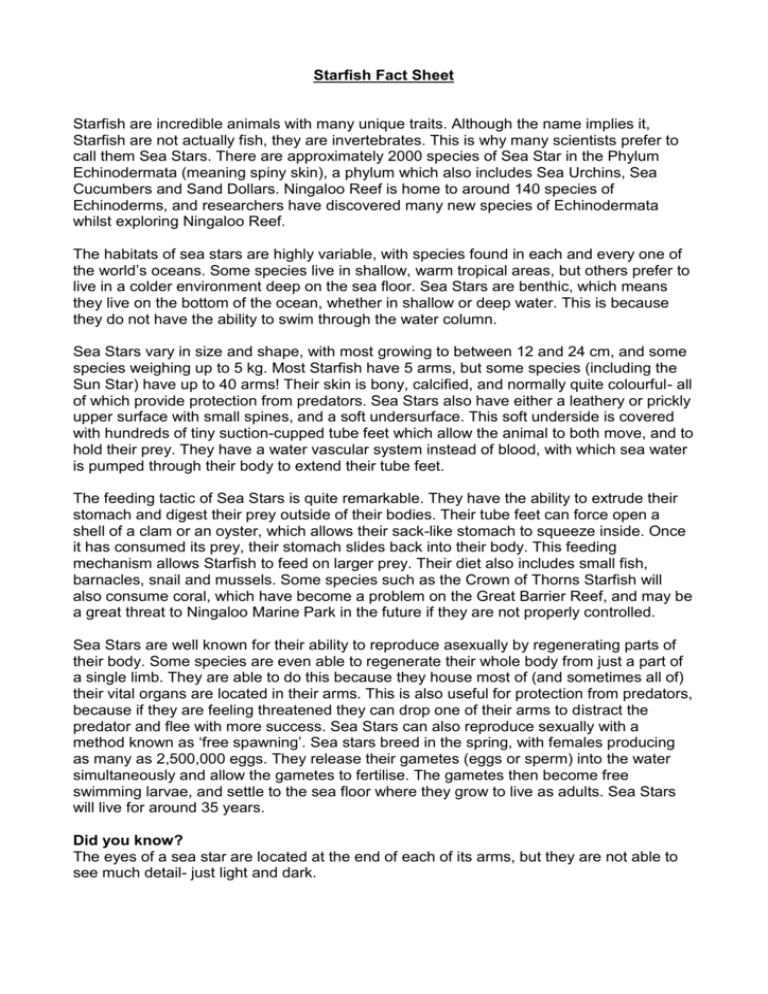
Starfish Fact Sheet Starfish are incredible animals with many unique traits. Although the name implies it, Starfish are not actually fish, they are invertebrates. This is why many scientists prefer to call them Sea Stars. There are approximately 2000 species of Sea Star in the Phylum Echinodermata (meaning spiny skin), a phylum which also includes Sea Urchins, Sea Cucumbers and Sand Dollars. Ningaloo Reef is home to around 140 species of Echinoderms, and researchers have discovered many new species of Echinodermata whilst exploring Ningaloo Reef. The habitats of sea stars are highly variable, with species found in each and every one of the world’s oceans. Some species live in shallow, warm tropical areas, but others prefer to live in a colder environment deep on the sea floor. Sea Stars are benthic, which means they live on the bottom of the ocean, whether in shallow or deep water. This is because they do not have the ability to swim through the water column. Sea Stars vary in size and shape, with most growing to between 12 and 24 cm, and some species weighing up to 5 kg. Most Starfish have 5 arms, but some species (including the Sun Star) have up to 40 arms! Their skin is bony, calcified, and normally quite colourful- all of which provide protection from predators. Sea Stars also have either a leathery or prickly upper surface with small spines, and a soft undersurface. This soft underside is covered with hundreds of tiny suction-cupped tube feet which allow the animal to both move, and to hold their prey. They have a water vascular system instead of blood, with which sea water is pumped through their body to extend their tube feet. The feeding tactic of Sea Stars is quite remarkable. They have the ability to extrude their stomach and digest their prey outside of their bodies. Their tube feet can force open a shell of a clam or an oyster, which allows their sack-like stomach to squeeze inside. Once it has consumed its prey, their stomach slides back into their body. This feeding mechanism allows Starfish to feed on larger prey. Their diet also includes small fish, barnacles, snail and mussels. Some species such as the Crown of Thorns Starfish will also consume coral, which have become a problem on the Great Barrier Reef, and may be a great threat to Ningaloo Marine Park in the future if they are not properly controlled. Sea Stars are well known for their ability to reproduce asexually by regenerating parts of their body. Some species are even able to regenerate their whole body from just a part of a single limb. They are able to do this because they house most of (and sometimes all of) their vital organs are located in their arms. This is also useful for protection from predators, because if they are feeling threatened they can drop one of their arms to distract the predator and flee with more success. Sea Stars can also reproduce sexually with a method known as ‘free spawning’. Sea stars breed in the spring, with females producing as many as 2,500,000 eggs. They release their gametes (eggs or sperm) into the water simultaneously and allow the gametes to fertilise. The gametes then become free swimming larvae, and settle to the sea floor where they grow to live as adults. Sea Stars will live for around 35 years. Did you know? The eyes of a sea star are located at the end of each of its arms, but they are not able to see much detail- just light and dark.





